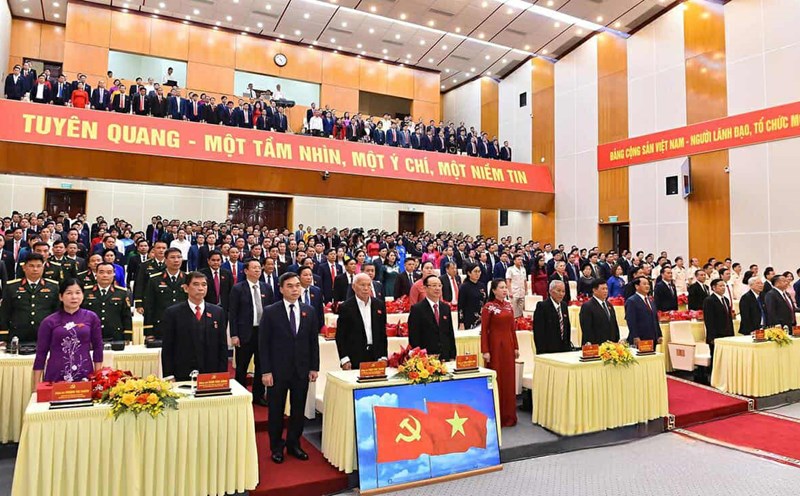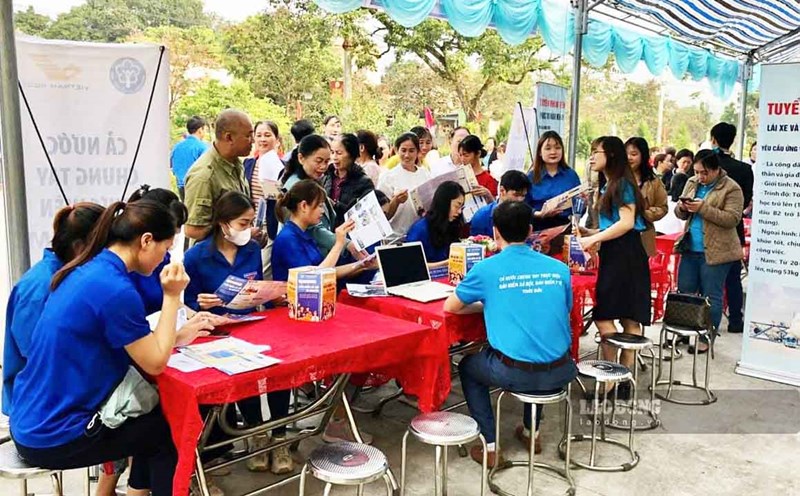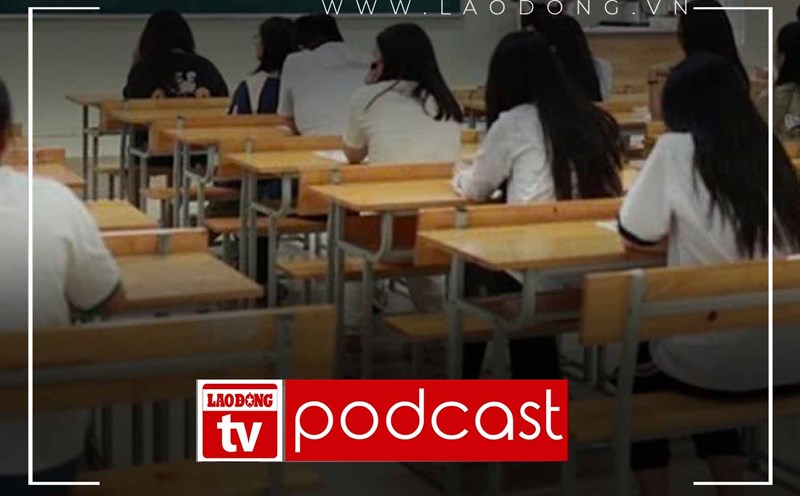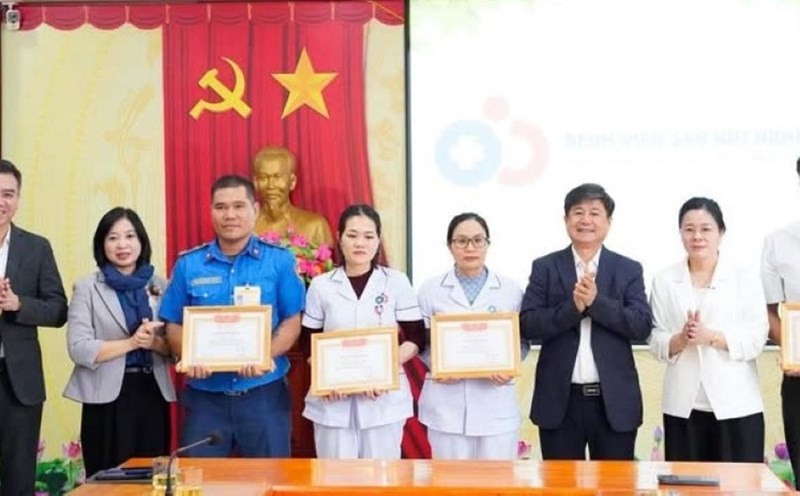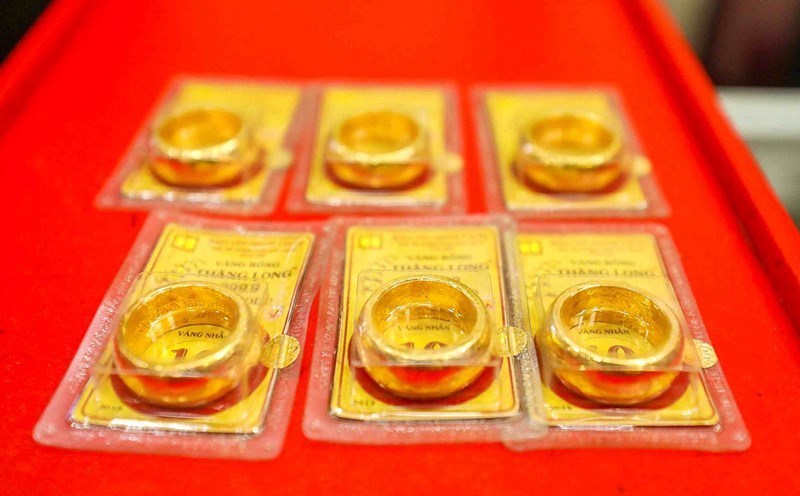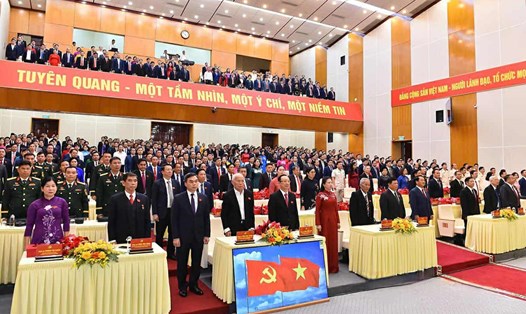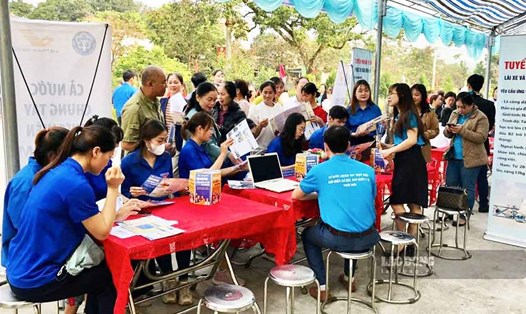In 2024, Mr. Tran Van Thuc, one of the poor households in Truong Sinh commune (Tuyen Quang), was supported with 10 goats from the "Project to diversify livelihoods and develop poverty reduction models" of the National Target Program (NTP) for sustainable poverty reduction. Since then, the family has had a new way out of poverty.
From the initial 10 goats, after more than 1 year, Mr. Thuc's family's goat herd has developed to 20 goats, including 14 breeding goats. Each generation of goats from the cage earns more than 30 million VND, helping Mr. Thuc's family have a stable source of income.
Mr. Thuc shared: Previously, the whole family of 4 had an unstable income, almost only relying on a few trays of rice. Since receiving support for raising breeding goats, my family has been very excited because goats are easy to care for, thanks to the goats, we have more income to raise the children to study. Currently, I have escaped poverty and gradually have a stable income, and can rest assured in raising livestock for economic development".
Dong Loi commune is considered one of the localities that effectively implemented the "Project on diversifying livelihoods and developing poverty reduction models" in the National Target Program on Sustainable Poverty Reduction in Tuyen Quang province.
In 2024 alone, Dong Loi commune will support goat raising livelihood models for 27 households, each household has 10 pigs, the cow raising model for 12 households, each household has 2 pigs. Up to now, livestock economic models in the commune have been effective, increasing income for people. Thanks to that, the poverty rate in Dong Loi has decreased significantly, currently below 3.5%.
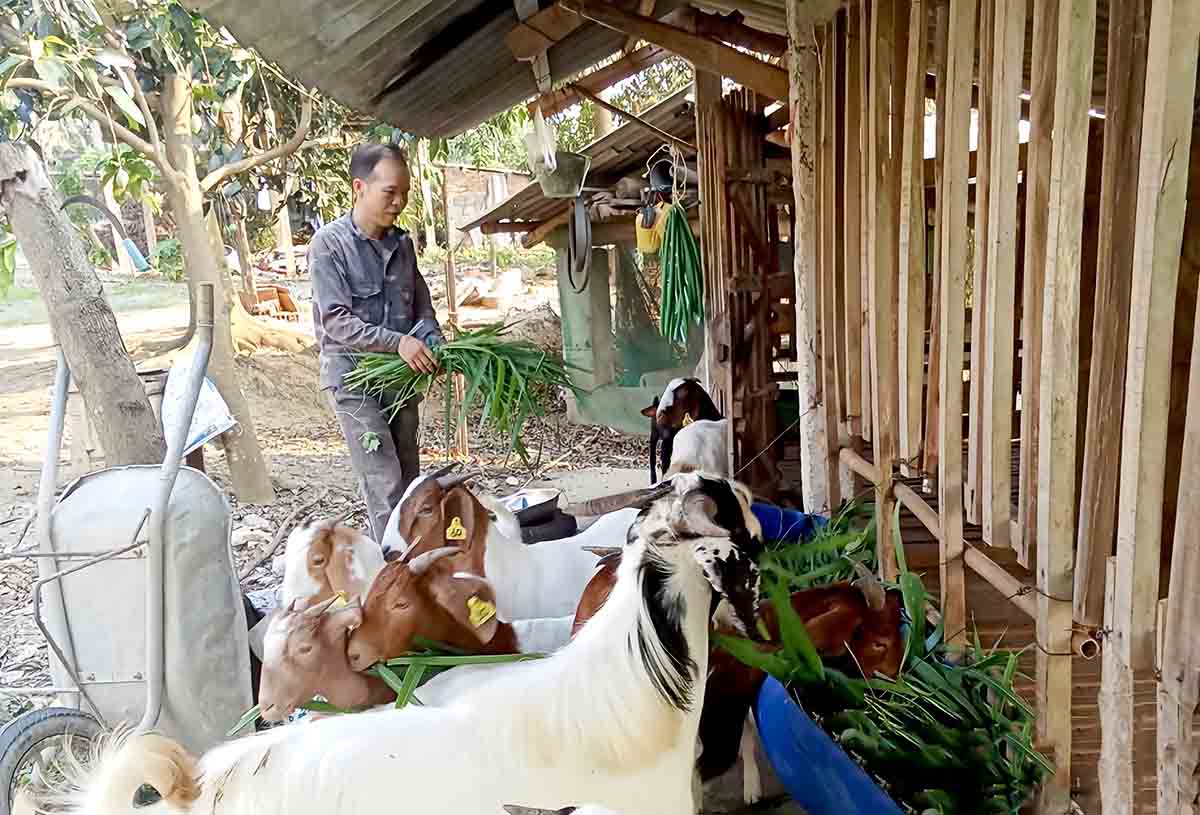
Not far away, thanks to raising breeding buffaloes supported by the National Target Program for Sustainable Poverty Reduction, Mr. Tran Van Ngoc, Phu Luong commune (Tuyen Quang) has a stable income to escape poverty.
"With 2 buffaloes initially supported, each year they will give birth to 2 more, take good care of them and sell the buffalo meat for more than 60 million VND. Along with farming and doing other jobs, I believe that I can escape poverty," Mr. Thuc excitedly shared.
Determining livelihood diversification as one of the most effective solutions in implementing the Sustainable Poverty Reduction Program, Tuyen Quang province has implemented many projects to support production development: chicken breeding, buffalo, cow, breeding goat breeding, support for fertilizer and sugarcane production...
From the above projects, hundreds of poor, near-poor and newly escaped poverty households in the area have been supported by the project. For policy households participating in the livestock model, people are supported with breeding animals, animal feed, veterinary medicine and other livestock materials.
Not only stopping at supporting, many training courses aim to raise people's awareness, "hand in hand" to help people apply science and technology in production, contributing to higher productivity, promoting the effectiveness of support resources.
According to the Department of Agriculture and Environment of Tuyen Quang province, diversifying livelihoods is identified as one of the important solutions in poverty reduction. Only people with stable livelihoods and incomes can sustainably reduce poverty.
In the period of 2021 - 2024, implementing the National Target Program on Sustainable Poverty Reduction, in the old Tuyen Quang province, the poverty rate decreased from 23.45% to 10.19%, down 13.26% compared to the beginning of the period, an average decrease of 4.42%/year, exceeding the set plan.
In the old Ha Giang province, the number of multidimensional poor households at the end of 2024 was 69,740 households (36.35%), down 11,711 households, equivalent to a decrease of 6.26% compared to the previous year, also exceeding the set target. The result is a combination of infrastructure investment, housing support, social policies and sustainable livelihood programs for the poor to strive to escape poverty.
The Resolution of the first Tuyen Quang Provincial Party Congress sets a target for the 2025-2030 period, reducing the poverty rate by 3-4% per year.

